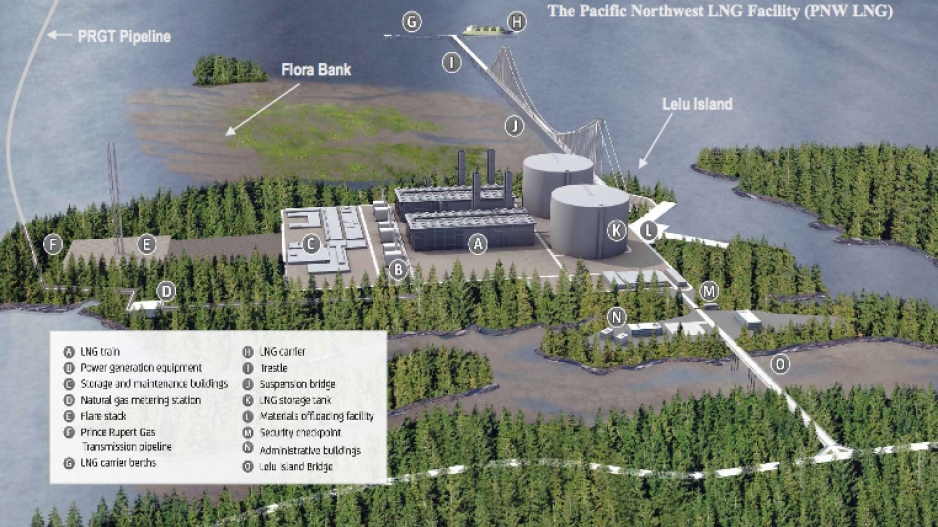Petronas and the Lax Kw’alaams First Nation have agreed to explore ways to mitigate the impact of a new liquefied natural gas plant and marine terminal on a sensitive estuary at the mouth of the Skeena River.
In May, the Lax Kw’alaams – one of five key First Nations in the Prince Rupert area – unanimously rejected a $1.1 billion benefits agreement offer from the company for their support of the project.
The Lax Kw’alaams have concerns about a suspension bridge that would carry LNG from a liquefaction plant on Lelu Island to an offshore marine terminal adjacent to the ecologically sensitive Flora Bank. They fear pilings would affect water flows.
At a conference sponsored by AltaCorp Capital in Vancouver August 25, Michael Culbert, president of Progress Energy (a wholly owned subsidiary of Petronas) and Pacific NorthWest LNG, said that a moderator had been brought in to help the two sides come together.
He said the company is now looking at modifications to the suspension bridge to address some of the concerns.
The same day that Culbert addressed industry players in Vancouver, the Lax Kw’alaams issued a press release that suggested the LNG site could be relocated.
“A protocol has been established to do investigative drilling in aid of determining an alternative site, away from the Flora Bank, for the shipment of any LNG from Prince Rupert harbour,” the release stated.
But in his talk with investors and analysts August 24, Culbert described the work more in terms of a design modification rather than a relocation.
He said modifications to the project could only go so far without triggering a whole new environmental review, which has already taken twice as long as it was expected to take.
The suspension bridge was one of the modifications the company made in order to address concerns over impacts on sensitive eelgrass habitat. Asked what further modifications might mean for the final cost of the $36 billion project, Culbert said:
“We have one of the most expensive alternatives in front of us, so tweaking it a little bit probably doesn’t have a big impact on the cost. That’s one of the reasons we’re doing the investigative work that will start up in the next couple of weeks, just looking at some bore holes to look at some different trajectories of the facility.”
See next week's issue of Business in Vancouver for more coverage on the PNW LNG project.




